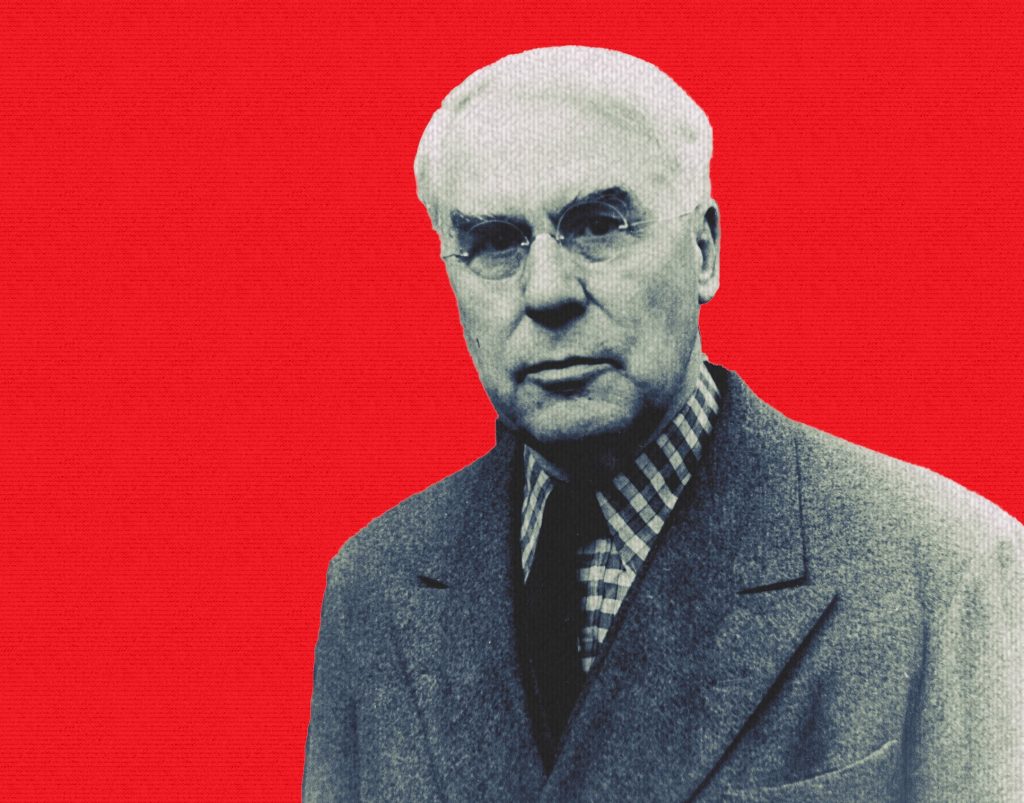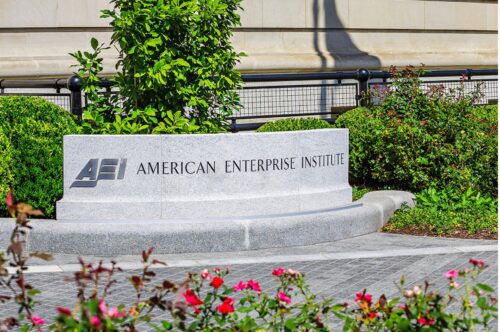A documentary that details the fight over the stewardship of a $25-billion art collection raises enduring questions of donor intent.
This piece was originally published in 2010. It is re-published today due to its enduring interest and significance in exploring questions of donor intent. Given Ms. Rimel's recent retirement as head of the Pew Charitable Trusts, this story also sheds light on the legacy she left behind after 36 years at the organization.
Foundation executives are forever complaining about the lack of publicity for their strenuous, benevolent labors. They now have The Art of the Steal, an independent film directed for 9.14 Pictures by Don Argott. This is not the publicity they had in mind.
The Art of the Steal took the Toronto International Film Festival by storm last fall, has been opening to packed crowds in select theaters around the country, and was purchased by IFC Films for nationwide distribution on pay-per-view cable channels.
It has all the ingredients of a foundation CEO’s publicity dream. It’s a compelling, suspenseful narrative about three major Philadelphia foundations, working in public-private partnership with state and city authorities to bring a world-class collection of art into the city’s downtown cultural district.
The collection, valued at upwards of $25-billion and including scores of works by post-Impressionist greats like Henri Matisse, Paul Cezanne, Pablo Picasso, and Pierre Auguste Renoir, had been assembled in the 1920s and 30s by the notoriously cantankerous Albert C. Barnes, a pharmaceutical magnate.
Smarting from the scorn with which the cultural elites initially greeted his collection, Dr. Barnes tucked it away in a small educational institute in Lower Merion, a suburb just outside Philadelphia. The trust documents for the Barnes Foundation specified that the collection should never be moved, sold, loaned, or even rearranged and that public access should be limited.
Further insulating his collection from the disdainful Philadelphia elites, Dr. Barnes entrusted to Lincoln University, a historically black college outside Philadelphia, the right to name most of his foundation’s trustees following his death.
By the 1990s, poor investment policies plus erratic and litigious leadership at the Barnes Foundation had depleted its original endowment, and it was operating with annual deficits.
Thanks to legal challenges financed by the Pew Charitable Trusts and the Lenfest and Annenberg foundations to remove the restrictions placed by Dr. Barnes on his collection, however, the Barnes artworks now seemingly enjoy a bright future. The three foundations bestowed on it a much expanded board of directors (ending Lincoln University’s dominance), a $50-million endowment, and a chic, new $150-million building a short walk from the Philadelphia Museum of Art, where it will be accessible to four times the attendance it could accommodate at its Lower Merion site.
Yet from the outset, the foundations involved in the rescue effort refused to have anything to do with The Art of the Steal. Pew’s Web site notes that “we learned that the film was going to be severely biased” and “given our institutional commitment to the facts and quality information, we decided it would be inappropriate to participate.” Rebecca Rimel, president of the Pew Charitable Trusts, insisted to a Washington Postreporter that she hasn’t seen the film “and doesn’t intend to.” (She also declined to talk to me for this column.)
One hopes that other foundation leaders will indeed watch the film, because it raises some critical questions facing foundations today.
First and most obvious is the issue of donor intentions. Nothing could have been clearer than Dr. Barnes’s wish for his collection to be housed in an educational institution, not a public museum. He wanted his organization’s faculty members to introduce small groups of students to his artistic theories, while studying his paintings quietly and intensely in the intimate galleries of the original Barnes building.
From the beginning, the public was admitted in small numbers by appointment, with larger numbers permitted in more recent years. But Dr. Barnes would have been appalled to hear his collection evaluated in terms of the daily turnstile counts it generates or the number of coffee mugs its gift shop sells.
Dr. Barnes’s intentions went by the wayside, suggests The Art of the Steal, because his collection brought dollar signs to the eyes of civic boosters, who now regard arts and culture to be just another commodity to be peddled to tourists. Mr. Argott, the film’s director, said in my interview with him, “It’s not about access. It’s not about preserving the collection in the long term. It’s always about the money.”
Ed Rendell, Pennsylvania’s governor, and John Street, Philadelphia’s mayor, might be forgiven for neglecting the donor’s intention on the way to acquiring a major economic asset for the city. It’s more difficult to forgive the foundations involved. They could have secured Dr. Barnes’s manifest desire to keep the collection where it is at a fraction of the cost incurred to move his collection downtown.
Ironically, donor intent often seems to be a cause championed only by conservatives to protect elitist projects of the wealthy against public demands for fairer and more inclusive grant making. But the Barnes case proves that donor intent works for everyone.
Dr. Barnes himself was a scrappy, self-educated populist, a strong supporter of Franklin Roosevelt’s New Deal who welcomed blue-collar laborers to his foundation’s classes. Donor intention in this case served for many years to protect an open, direct, democratic approach to art against the powerful and wealthy downtown elites, who insisted that art could be understood only by credentialed experts.
Much of the drama in The Art of Steal comes from the suggestion that city leaders and foundations used their dollars and influence to browbeat, bribe, and coerce Lincoln University into turning loose the Barnes Foundation.
Whatever the truth of those allegations, a more disturbing lesson from the film is that the Barnes controversy was produced not so much by skullduggery, but rather by cutting-edge, “best practice” approaches to grant making that foundations are urged to pursue today.
The original Barnes Foundation is, according to leading cultural critics, an artistic jewel in its own right, housed in a building designed by the renowned architect Paul Phillippe Cret, nestled in an arboretum carefully planned to prepare visitors to absorb the sights inside, located on a quiet, leafy, suburban lane. In the old days, foundations might have understood this to be a unique, irreplaceable, and nontransferable cultural treasure, a singular expression of civil society inseparably linked to the place chosen and crafted for it, worthy to be preserved as (and where) it is.
Today, though, as Michael Lewis, a professor of American art and architecture at Williams College noted in a 2006 article in Commentarymagazine called “Art for Sale,” foundations in the arts arena are increasingly unwilling to give for reasons of “pure philanthropy” but instead “require results-oriented accounting, which by definition measures only that which is measurable: not only visitors and sales but also size of staff and value of endowment, number of exhibitions and new acquisitions, physical plant and cubic capacity.”
The major Philadelphia foundations are, in their view, only dragging the archaic Barnes into this brave new cultural world.
They’re practicing state-of-the-art venture philanthropy by turning the dusty, idiosyncratic Barnes collection into a gleaming, self-supporting engine of urban economic development complete with gift shop, cafeteria, exhibit spaces, and, of course, throngs of tourists. And they’re doing all this collaboratively and through a public-private partnership, techniques that are all the rage in philanthropy today.
Sadly, they’re doing this at the precise moment when most other Philadelphia arts and culture organizations are already struggling to fill seats and sustain budgets, following cutbacks in public and private support and anemic results from previous cultural megaprojects.
In the final analysis, “Barnes on the Parkway” may turn out to be not only a sad shadow of its previous incarnation in Merion but also another monument to the disastrous hubris of venture philanthropy.
A final lesson from The Art of the Steal involves the way foundations choose to deal with public scrutiny of their behavior. Mr. Argott noted in our interview that he approached this project with few preconceptions about the nonprofit world beyond the notion that “they’re charitable, so obviously they must be doing good.”
Now he’s persuaded that “they get away with so much because they always act like they’re coming in as the savior, as the people that are working within the public’s interest.” Foundations have recently become more sensitive to misunderstandings raised by their mode of operating and have embraced, volubly and endlessly, the values of transparency and accountability.
That’s easy to practice when unexceptionable grants are being made to uncontroversial projects. It’s not so easy – but it’s all the more essential – when foundations enter the realm of public controversy, as the Barnes “rescuers” most definitely have.
Yet Mr. Argott pointed out that he encountered “the exact opposite of transparency. If they wanted to be transparent, what do they have to hide? Why wouldn’t they talk to us?”
Ms. Rimel’s loftily dismissive pronouncement that she has not seen the film and won’t respond to it is not designed to cultivate the impression of openness in the foundation world.
Foundation executives who want more attention for their good deeds have now gotten it. But The Art of the Steal suggests that grand benevolent strategies pursued ruthlessly and at the cost of the particular, the unique, and irreplaceable may not always earn them the gratitude of the public.







Next year I will be conducting a study of the unethical, immoral, illegal acts of donors, nonprofit executives, development executives, and board governance. After 40 years building a fundraising practice that has worked with over now 6000 nonprofits raising over $200 billion and building over 40,000 facilities. I have been in the fortunate role to see and be a part of influencing incredible visions that change lives. Unfortunately, I have also witnessed hundreds if not a thousand inappropriate and improper use of funds at a rate much greater that anyone can imagine. Most never see the light of day, because their exposure would bring shame on the ones mentioned. While I am not looking forward to the discovery, my hope is that the product of my work will help those participating discover someone is watching and “being a dogooder” is not an excuse.